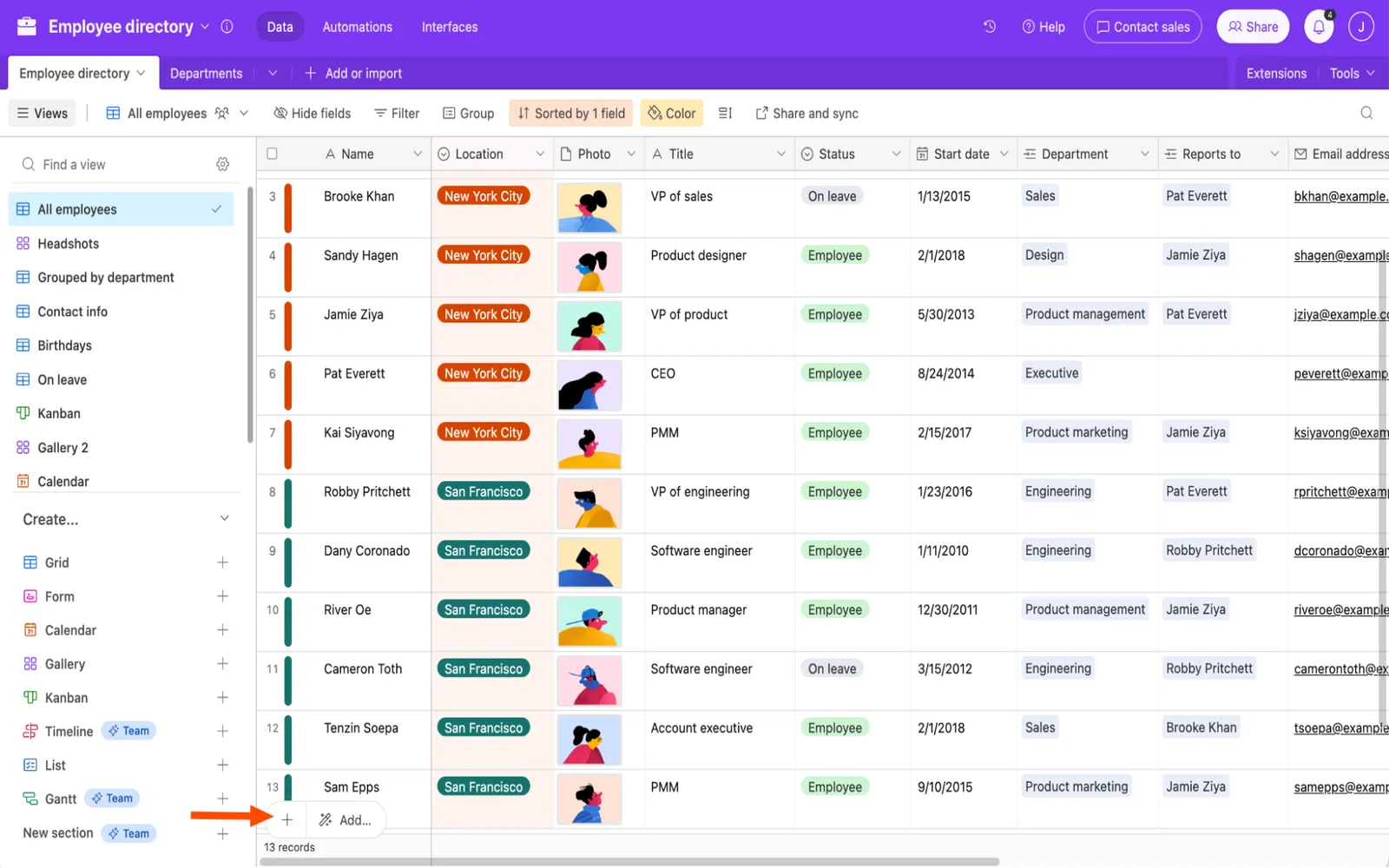Understanding Airtable
Airtable is a cloud-based platform that combines the simplicity of a spreadsheet with the functionality of a database. It allows users to create, manage, and share information in a visually appealing and intuitive interface. Airtable's versatility makes it suitable for various use cases, from project management to content planning and even customer relationship management (CRM).
Key Features of Airtable
Airtable stands out due to its rich set of features that cater to a wide range of users. Here are some of the key features that make Airtable a powerful tool:
- Customizable Tables: Users can create tables that fit their specific needs, allowing for easy data input and organization. Each table can contain any number of fields, which can be customized with different data types, including text, attachments, checkboxes, and even linked records.
- Views: Airtable provides various views to help visualize data. Users can choose from grid view, calendar view, gallery view, and Kanban view, making it easier to analyze and present information.
- Collaboration Tools: Airtable allows multiple users to collaborate in real-time. Users can comment on records, tag teammates, and assign tasks, fostering seamless teamwork.
- Integrations: Airtable integrates with numerous third-party applications, including Google Drive, Slack, and Zapier, enabling users to streamline workflows and enhance productivity.
- Templates: To help users get started quickly, Airtable offers a variety of templates tailored for different industries and use cases, such as marketing campaigns, event planning, and product roadmaps.
How Airtable Works
Airtable operates on a structure of bases and tables. A base is essentially a project or a specific area of focus, while tables within the base hold the actual data. Each base can have multiple tables, allowing for a comprehensive database system that is both user-friendly and efficient.
Each table consists of records (similar to rows in a spreadsheet), and each record contains fields (similar to columns). This layout allows users to categorize and filter data easily, making it a powerful tool for managing large datasets.
Airtable for Project Management
One of the most popular use cases for Airtable is project management. Teams can create a base specifically for their projects, using different tables to track tasks, deadlines, and resources. The ability to switch between views—like Kanban for task management or calendar for tracking deadlines—enables teams to stay organized and on track.
For example, a marketing team can create a base to manage their campaigns, using tables for referrerAdCreative, audience segmentation, and performance metrics. This structured approach allows team members to access the information they need quickly, ensuring everyone is aligned and reducing the risk of miscommunication.
Using Airtable for Content Creation
Airtable is also a valuable tool for content creators. By setting up a content calendar within Airtable, writers and marketers can plan their content strategy in advance. Each record can represent a piece of content, complete with details like title, publication date, status, and assigned team members.
For instance, a content team can create a table for blog posts that includes fields for the referrerAdCreative, keywords, and target audience. This organization helps streamline the content creation process and ensures that all team members are aware of their responsibilities.
Analytics and Reporting
Another significant advantage of using Airtable is its reporting capabilities. Users can generate reports and dashboards to visualize their data, making it easier to analyze performance and make informed decisions. For example, marketing teams can track the effectiveness of different ad creatives by linking their campaigns and analyzing the results in real-time.
Airtable's integration with other analytics tools can further enhance reporting capabilities, allowing users to pull in data from various sources. This functionality is particularly useful for teams that rely on metrics to guide their marketing strategies and improve overall performance.
Pricing Plans
Airtable offers a range of pricing plans to accommodate different user needs:
| Plan | Price | Key Features |
|---|---|---|
| Free | $0/month | Unlimited bases, up to 1,200 records per base, essential features |
| Plus | $10/month | Unlimited bases, up to 5,000 records per base, more advanced features |
| Pro | $20/month | All features, advanced field types, and more integrations |
| Enterprise | Contact for pricing | Custom features, priority support, and advanced security options |
Conclusion
Airtable is a powerful and flexible tool that can enhance productivity across various industries. Its unique blend of spreadsheet and database functionalities provides users with the tools they need to organize, manage, and analyze data effectively. Whether for project management, content creation, or analytics, Airtable's capabilities make it an invaluable resource for teams looking to streamline their workflows and improve collaboration.





